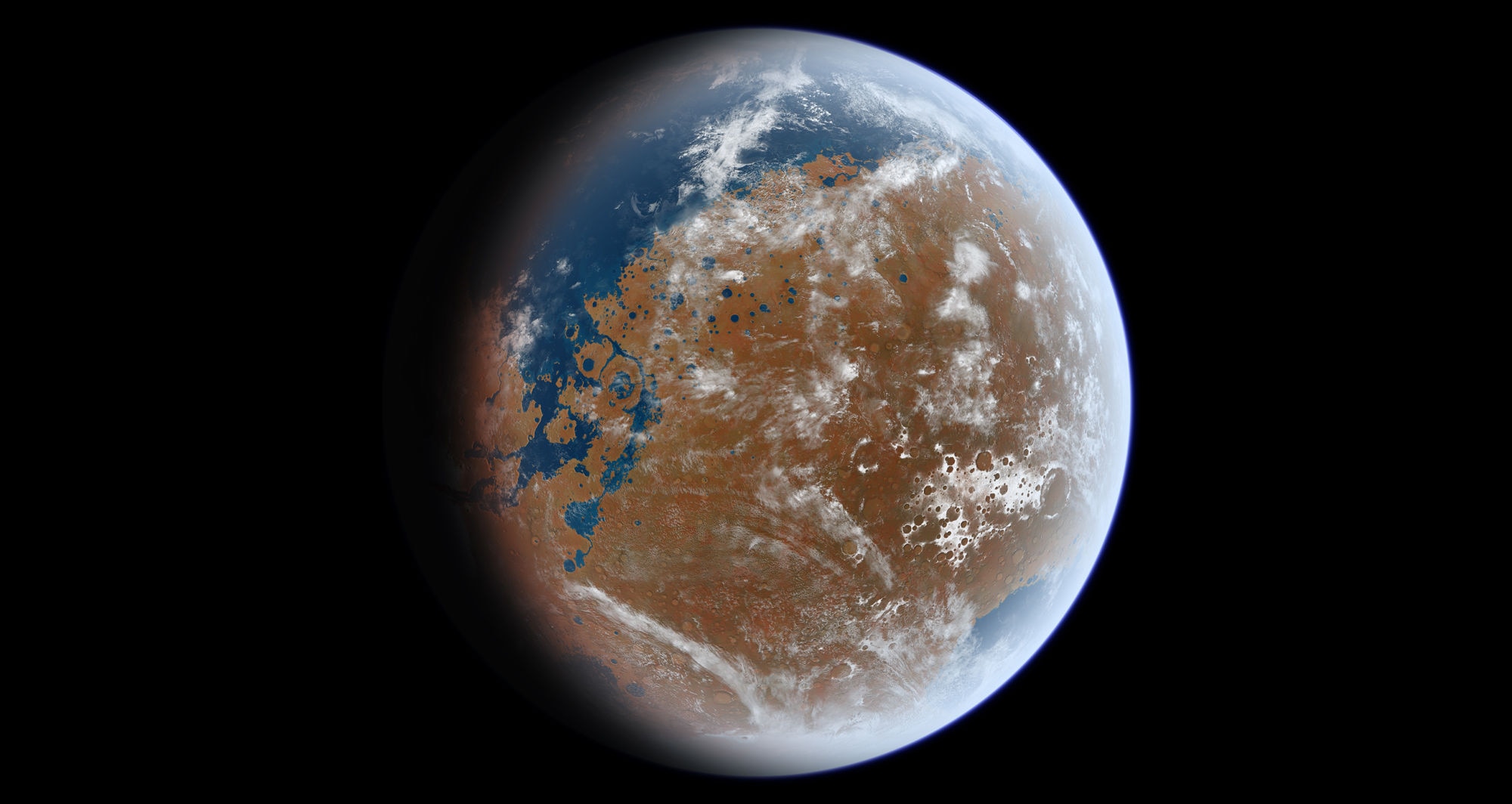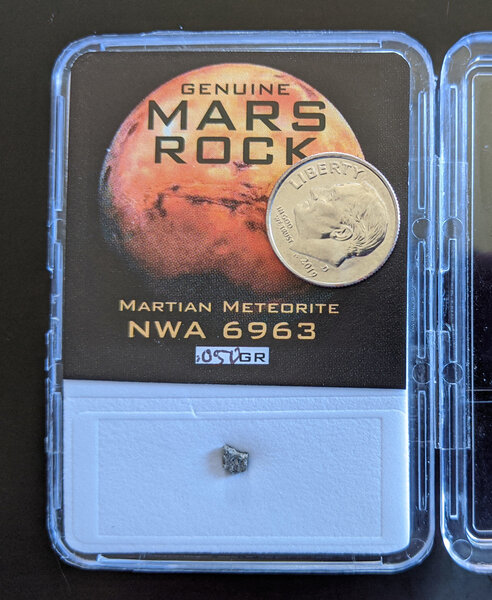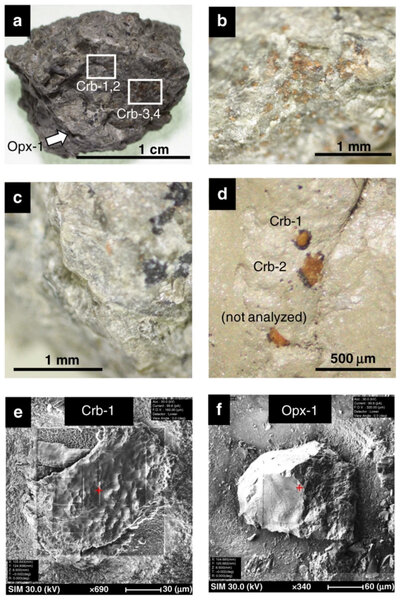Create a free profile to get unlimited access to exclusive videos, sweepstakes, and more!
New technique shows Martian meteorites are capable of transporting evidence of life to Earth

A new technique to examine the composition of Martian meteorites shows that it's possible for organic molecules to be preserved in them for billions of years on the planet and millions of years in space before falling to Earth.
This means that if life ever existed on Mars, and if it happened to be in a spot that got hit by a large enough asteroid to fling material into space, it's possible for us to be able to find evidence for it. That's a lot of ifs, sure, but this is still a positive step in the exploration of ancient life and its environs on Mars.
I want to be careful here and state up front that no, scientists haven't found life on Mars; no, they haven't found life in a meteorite; and no, they haven't found evidence of life in a meteorite. Got it? Cool.
We know that some meteorites that have fallen to Earth were once rocks on Mars. Tiny bubbles of gas preserved in these meteorites match the abundances and isotopic ratios of elements measured on Mars in situ by spacecraft that have landed there. One of these meteorites is called Allan Hills 84001 (or just ALH 84001), which was found on the Antarctic ice in 1984.
You may remember quite a furor in the 1990s when it was announced that evidence of ancient Martian life was found in this rock; it was something of a media sensation. But it didn't take long for scientists to show that these claims were not well-founded and that abiotic (non-life) origins for all the evidence were more likely.
However, that doesn't change the fact that this meteorites is a chunk o' Mars, and worth studying. It's old, dating back about 4 billion years (when Mars was warmer, had a thicker atmosphere, and was almost certainly much wetter than today), and is mostly igneous rock. It sat beneath the surface for billions of years, then about 15 or so million years ago a huge asteroid impact on Mars blasted it into space. It spent a long time orbiting the Sun until the Earth got in its way about 13,000 years ago, when it fell in Antarctica.
That last bit is a problem. Because it sat on Earthly ice for so long, it's likely it was contaminated to some degree by local stuff. Organic molecules — to be clear, that means carbon-based but not necessarily indicating life — have been found in it, but it's not clear if they came from Mars or from contamination here on Earth.
Scientists using a new technique to examine it, though, claim that they have been able to minimize contamination. They used some different lab techniques that help (like using metal tape to remove grains from the rock instead of epoxy tape which can mess with the results), and pulled a couple of orange-colored grains from a small sample of the rock. These grains are carbonates, organic molecules that form from dissolved compounds precipitating out of water.
They wanted to look for nitrogen in the carbonates, which has been very difficult to detect up until now. They used a method involving beaming X-rays at the sample and looking for absorption lines in the spectra, places where nitrogen likes to absorb X-rays. They found two strong lines, consistent with nitrogen in imino and nitrile molecules, which are both organic molecules. Interestingly, they did not find spectral lines indicating inorganic nitrogen, which is pretty decent evidence what nitrogen they did find was bound in organic molecules.
Could this still be nitrogen that somehow wiggled into the sample from Antarctic ice? They find that this is very unlikely, since the amounts they found are much larger than what you'd expect from terrestrial contamination. Not necessarily an open-and-shut case, but still pretty good.
So what does this mean? Well, it's not clear where the nitrogen came from. It could have lots of abiotic sources, like meteorites falling to Mars (some of which we know have amino acids and other nitrogen-bearing organic molecules in them), lightning zapping nitrogen in the ancient Martian atmosphere so that it can recombine into different molecules, and so on.
Buuuuuuut it can also come from biological processes too. The method they used cannot distinguish them, which is why I was clear up top that this isn't evidence of life.
That's not the point, though: The important thing here is that this is evidence that nitrogen-bearing organic molecules can survive in a meteorite! Remember, this suffered a huge impact, flew around in space for millennia being bombarded by solar radiation and cosmic rays (subatomic particles zipping through space at very high speed that can break down molecules), then fell to Earth in a fiery meteor. It's been through a lot, but managed to keep its cargo intact.
That means that if there are organic molecules that are more, ah, complex — you get what I'm saying here — they too may be able to stay intact (long dead, but intact) enough to detect in these rocks. That's nice, because these fall to Earth and all we have to do is collect them! Well, it's not that easy, but it’s easier than bringing them back from Mars — which, truth be told, is what a lot of folks are planning are doing.
We still don't know if there ever was life on Mars. We're still trying to figure out hat conditions were like back then, which is a primary purpose of the Curiosity and now the Perseverance rovers. Finding a wee beastie would bypass a lot of that, perhaps, though for the moment that's just wishful thinking. But now, hopefully, we're a small step closer to that now.
















